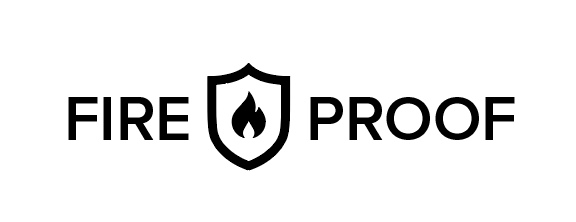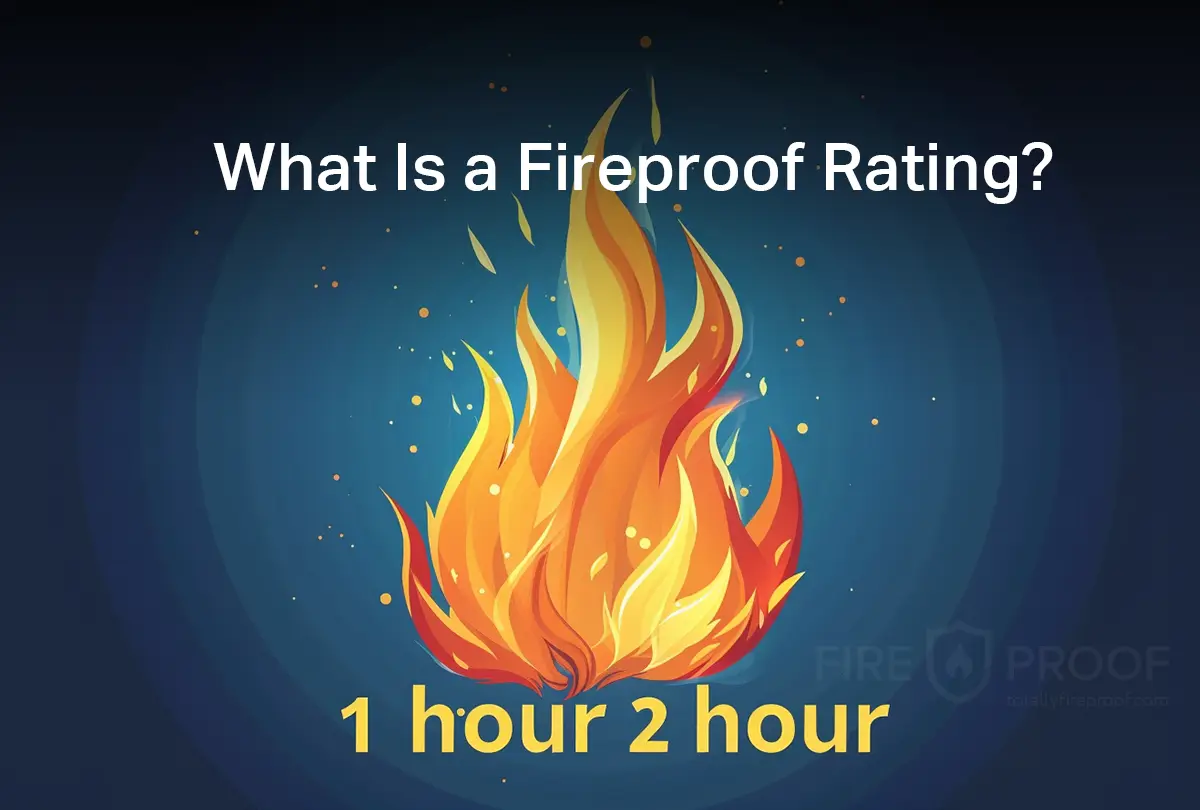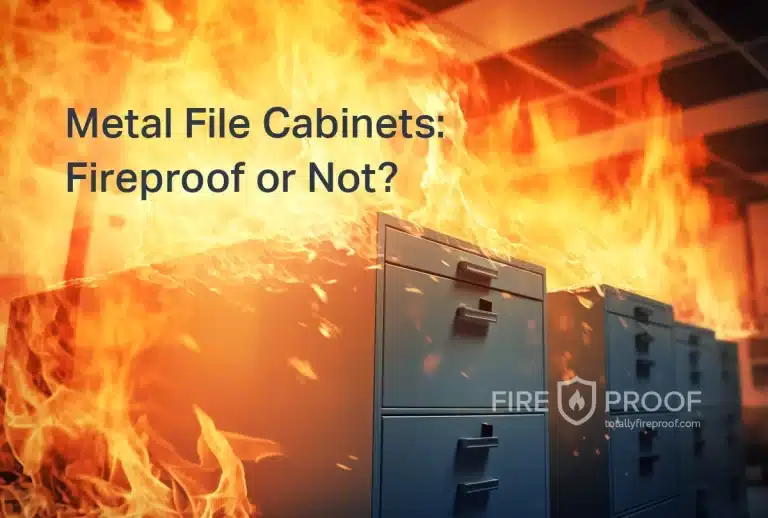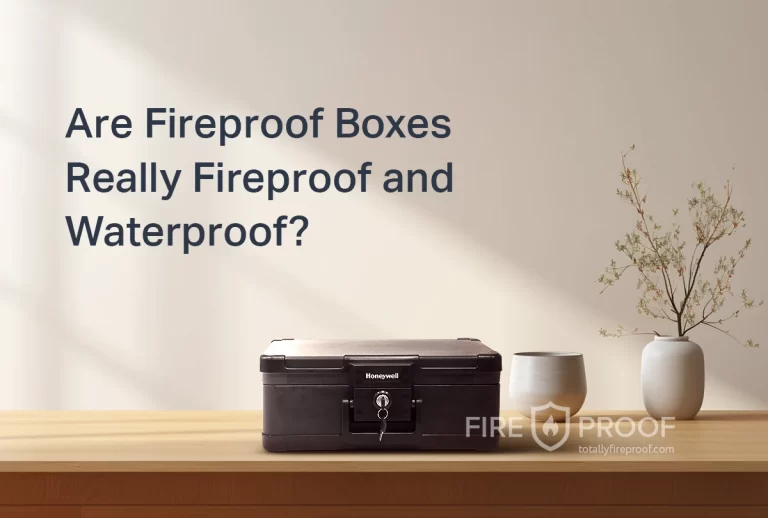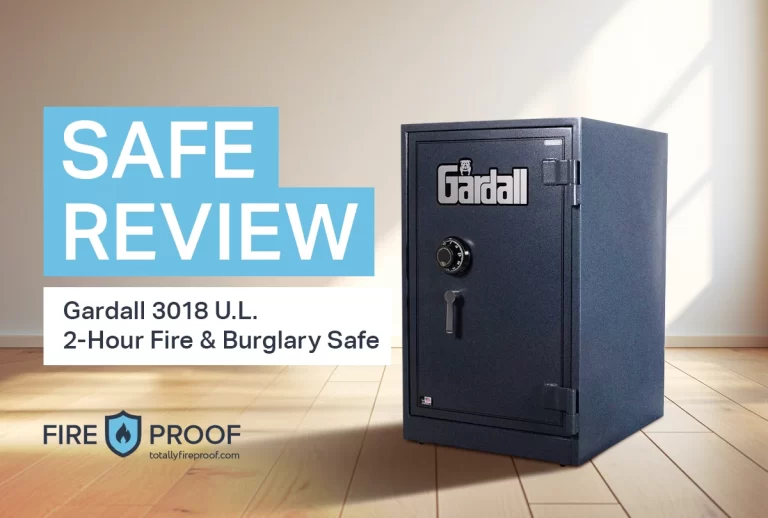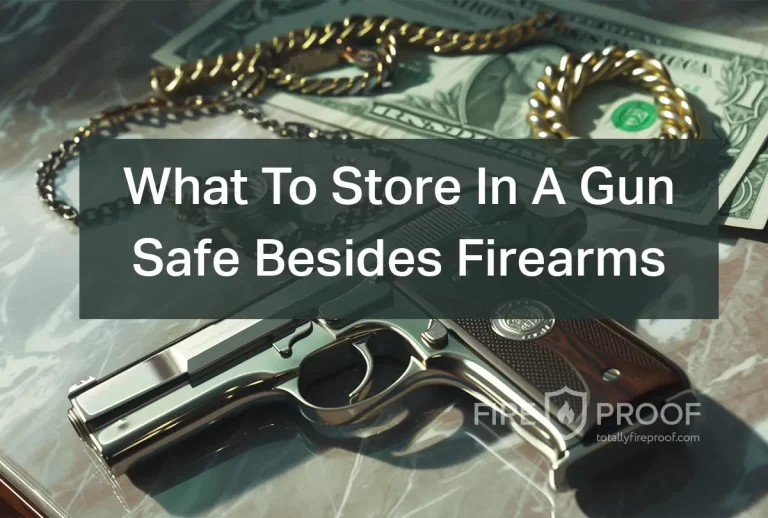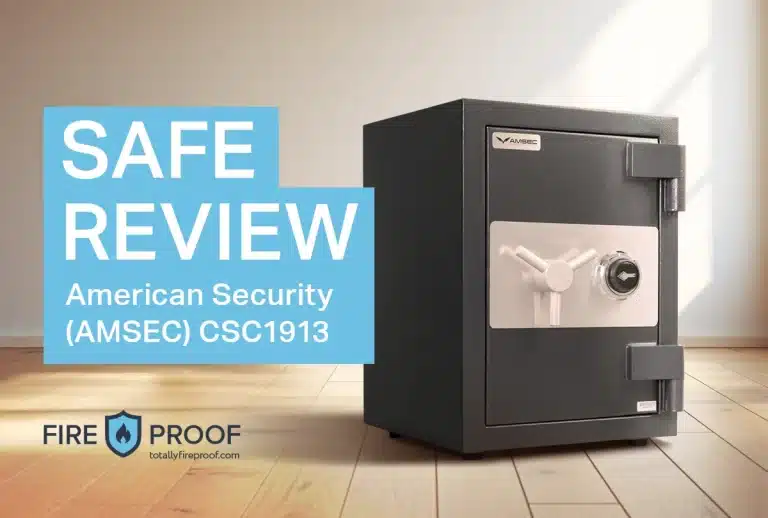What Is a Fireproof Rating?
In simple terms, a fireproof rating tells us how good a material or building is at fighting off fire and staying strong under high heat.
When we talk about safes, this rating shows us for how long (in hours or minutes) a safe can keep its cool and protect what’s inside against flames and heat. It gives us the understanding of the maximum heat a safe can handle and for how long it can hold up.
What a Fireproof Rating For Safes Is
Safes come with different fire resistance levels, each marked by a fireproof rating that shows how long the safe can shield its contents from fire and heat, measured in minutes or hours.
This rating is determined by putting the safe through a tough test in a controlled setting, where it faces intense heat and flames for a set time. If the safe keeps its inside safe and unharmed during this time, it passes and earns a fire rating.
Why Safe’s Fireproof Rating Is Crucial
The fireproof rating is key when picking a fireproof safe because it tells you how effectively the safe will guard your important items like documents, cash, or hard drives against fire. It lets you know the kind of items you can keep safe and for how long they’ll be protected.
A higher fireproof rating indicates the safe can endure more intense heat and flames for a longer time, enhancing the odds of preserving your valuables in a fire.
Types of Fireproof Ratings
There are two main types of fireproof ratings for safes that are recognized in US:
- UL Fireproof Ratings: One of the most prevalent fireproof rating standards in the United States. It is assigned by Underwriters Laboratories (UL). This standard is commonly expressed by a specific fire resistance class (Class 125, Class 150, Class 350) and a duration (30-minute, 1-hour, 2-hour, or more).
- ETL Fireproof Ratings: The ETL mark, granted by Intertek, is another notable fireproof rating standard. ETL rates safes with similar timeframes as UL and ensures consistent and reliable fire protection.
Here’s a table showing most common ratings in US:
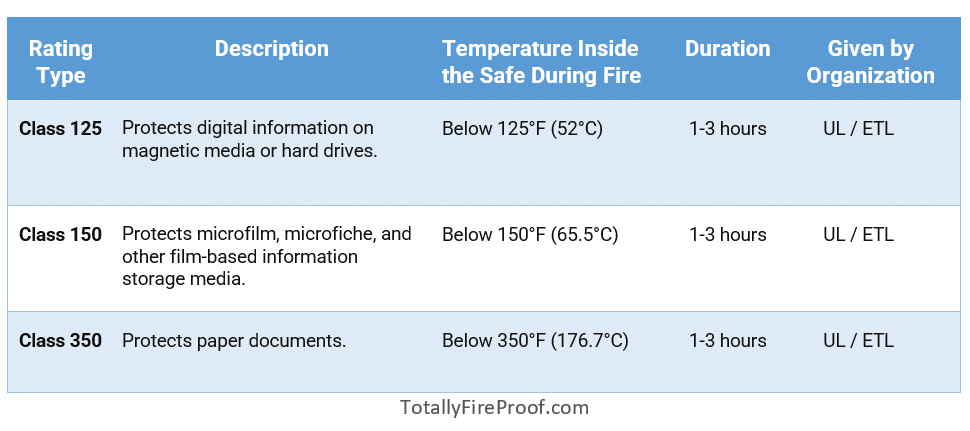
Outside of the United States, various organizations offer their own fireproof ratings. To name a few: The Canadian Standards Association (CSA), the European Committee for Standardization (CEN). Each provides their own set of standards to assess the fire resistance of safes.
How Fireproof Ratings Are Determined
- Controlled Testing: Fireproof safes undergo rigorous testing in controlled fire and heat conditions that are designed to simulate real-world scenarios.
- Temperature and Time-frame: During these tests, safes are exposed to escalating temperatures as well as flames for a certain duration.
- A Passing Grade: The goal is to evaluate how effectively a safe will not allow significant heat transfer to its interior. Depending on the safe’s effectiveness to prevent heat transfer to its inner chamber, the fireproof rating is then assigned.
Choosing the Right Fireproof Rating
To pick the right fireproof rating for your safe, first consider the type of items you’ll store. Different belongings like papers, digital devices, or valuables require varying levels of fire protection. For example, money would be best protected in a UL Class 350 rated safe.
Then, assess the risk level of fire in your area. A small, quickly extinguished fire has different demands than a major wildfire. The latter would necessitate a safe with a higher fireproof rating due to the greater risk and intensity.
Conclusion
To sum it up: A fire fireproof rating for safes measures how many hours/minutes a safe will stay undamaged when exposed to fire and heat. A rating will state what max temperature it can withstand and for how long.
Fireproof ratings are an important factor to consider when choosing a fire-resistant safe. Be sure to look for a model that has a rating given by one of the well-recognized testing organizations.
